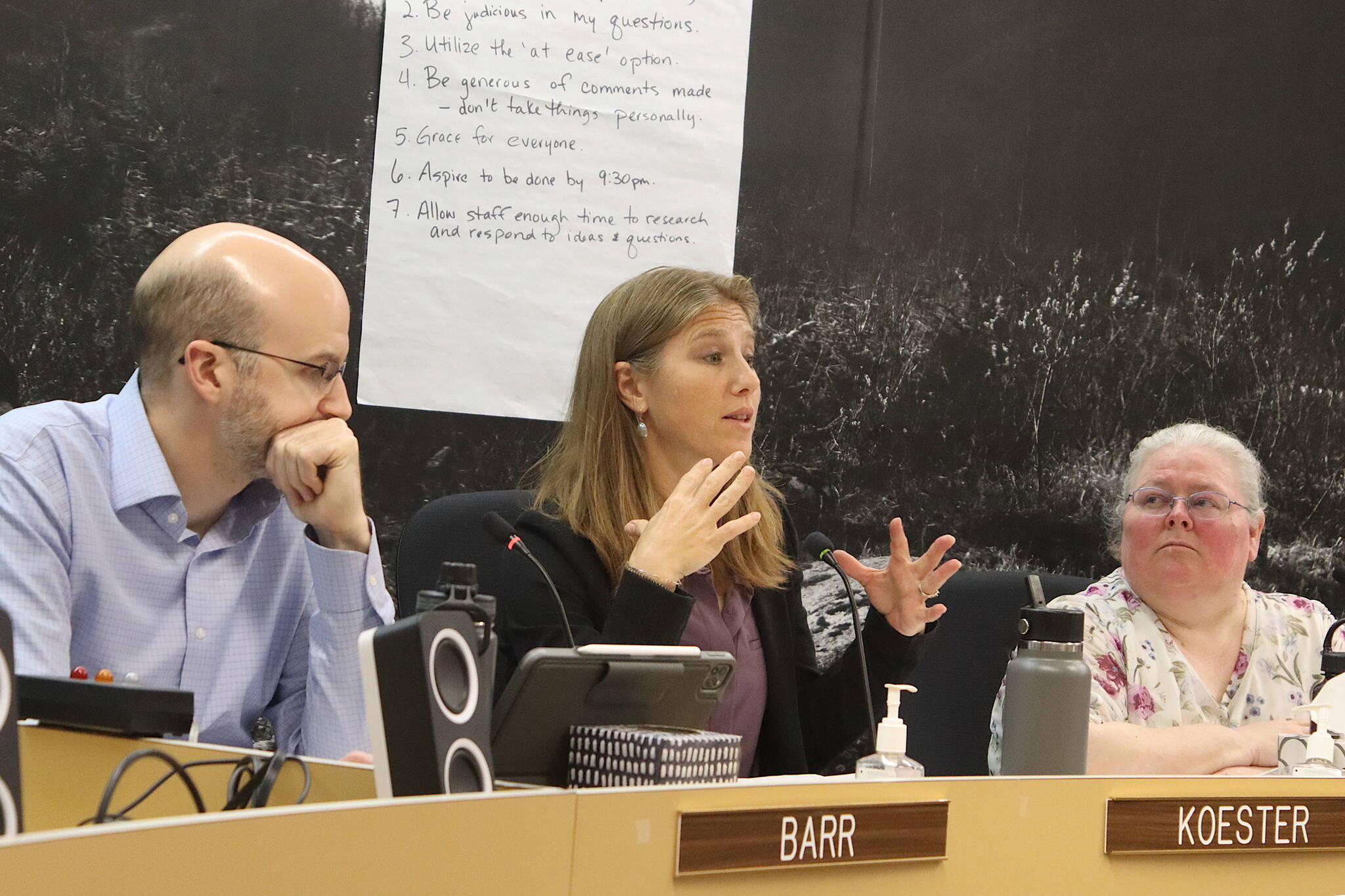With the Juneau Assembly giving millions of extra dollars to the Juneau School District to help with a financial crisis and taking over three buildings as part of the plan, members figure they can save millions using that space for other things in next year’s budget.
A proposal providing $4 million to purchase land for a family center operated by the Southeast Alaska Association for the Education of Young Children (AEYC) was rejected by the Assembly’s Finance Committee on Wednesday night. It was by far the largest of 17 project funding requests still pending as of the meeting — and far more than the $1.1 million projected cost for the city to take over the three buildings (although it will incur considerable additional and ongoing maintence and operating costs).
The finance committee, in separate action during the meeting, also considered changes to its capital improvement projects list. Members unanimously approved adding about $900,000 to fund most of the cost of an elevator at the Dimond Park Field House to make it accessible to people with disabilities, while deciding the proposed purchase of a $400,000 tire shredder for the privately-operated Juneau landfill needs further study by the Assembly’s Committee of the Whole.
The family center proposal was presented by Assembly member Greg Smith, who said AEYC understood the $4 million “was a top-line” number and the organization was open to alternatives including a loan. But Smith said the city’s takeover of the school buildings since he first discussed the project with AEYC meant he couldn’t support the funding request, even though the organization has said it wants a dedicated “purpose-built building” as part of its center.
An AEYC description of the project states its family center “is envisioned to include offices, a childcare facility, a lending library, a commercial kitchen and dining hall, meeting spaces for events and training, a children’s art studio, community gardens, an indoor playground, and a children’s museum.” The organization states it has secured $5 million in funding from U.S. Sen. Lisa Murkowski for the project, and the owner of a lot near Egan Drive and Old Dairy Road has accepted a letter of intent to purchase the property.
Meanwhile, the city is preparing to take over the Marie Drake Building, Floyd Dryden Middle School and the district’s administrative building, with local officials currently seeking proposals for entities wanting to use space in the first two buildings. Projects similar to AEYC’s have been proposed at both Marie Drake and Floyd Dryden, including the Central Council of Tlingit and Haida Indian Tribes of Alaska seeking to lease 14,000 square feet for Headstart and childcare.
Deputy Mayor Michelle Bonnet Hale said while “I’ve always supported AEYC in the past,” she also couldn’t support funding the purchase of land to build a new facility. She compared it to city leaders wanting a new City Hall building, but after voters twice rejected bond measures funding it officials are now planning to move employees into an existing office building.
“I just cannot support funding for land for a new facility when we have schools that are vacant,” she said. “I know they don’t provide what AEYC is hoping for in their vision…but I’ll repeat what (Mayor Beth Weldon) said: ‘We wanted a purpose-built facility too and there’s only so much money to go around.’”
A motion by Assembly member Paul Kelly to reduce the allocation to $2 million failed by a 3-5 vote, with Alicia Hughes-Skandijs and Christine Woll also voting in favor (Weldon was absent from the meeting due to the recent death of her husband). The $4 million allocation failed by 1-7 tally with Woll casting the only affirmative vote.
Assembly members also voted against another major project providing $2.1 million to the Juneau Community Foundation to “building housing for homeless/low-income populations.” While Assembly members agreed such housing is a critical need, some argued the project funding duplicates work already being done with the Affordable Housing Fund and other projects, including some the foundation is involved with. Some members also stated future or alternative funding support is possible.
JCF, in its project request to the Assembly, stated it is hoping to build up to 300 housing units throughout Juneau “for extremely to very low income people” during the next decade at a total cost of up to $11.5 million. The organization is also seeking money from other public and private sources.
The finance committee did give preliminary approval to some smaller community projects including $668,799 to Alaska Heat Smart to provide three years of operational support, and $500,000 to the Sealaska Heritage Institute for development of a FabLab at its Walter Soboleff Building and Arts Campus described as “an educational facility to house its STEM (Science, Technology, Engineering, Math) programming.”
Approved projects were moved from the projects’ “pending” list, but are still subject to public comment, revisions and final approval by the full Assembly. Among the seven remaining items on the pending list not considered by Assembly members Wednedsay and scheduled for a future finance committee meeting are $500,000 for an AEYC “parents as teachers” program, $115,000 to the Juneau Economic Development Council for a “Choose Juneau Research Project” and $110,000 to Travel Juneau for visitor count research.
• Contact Mark Sabbatini at mark.sabbatini@juneauempire.com or (907) 957-2306.

